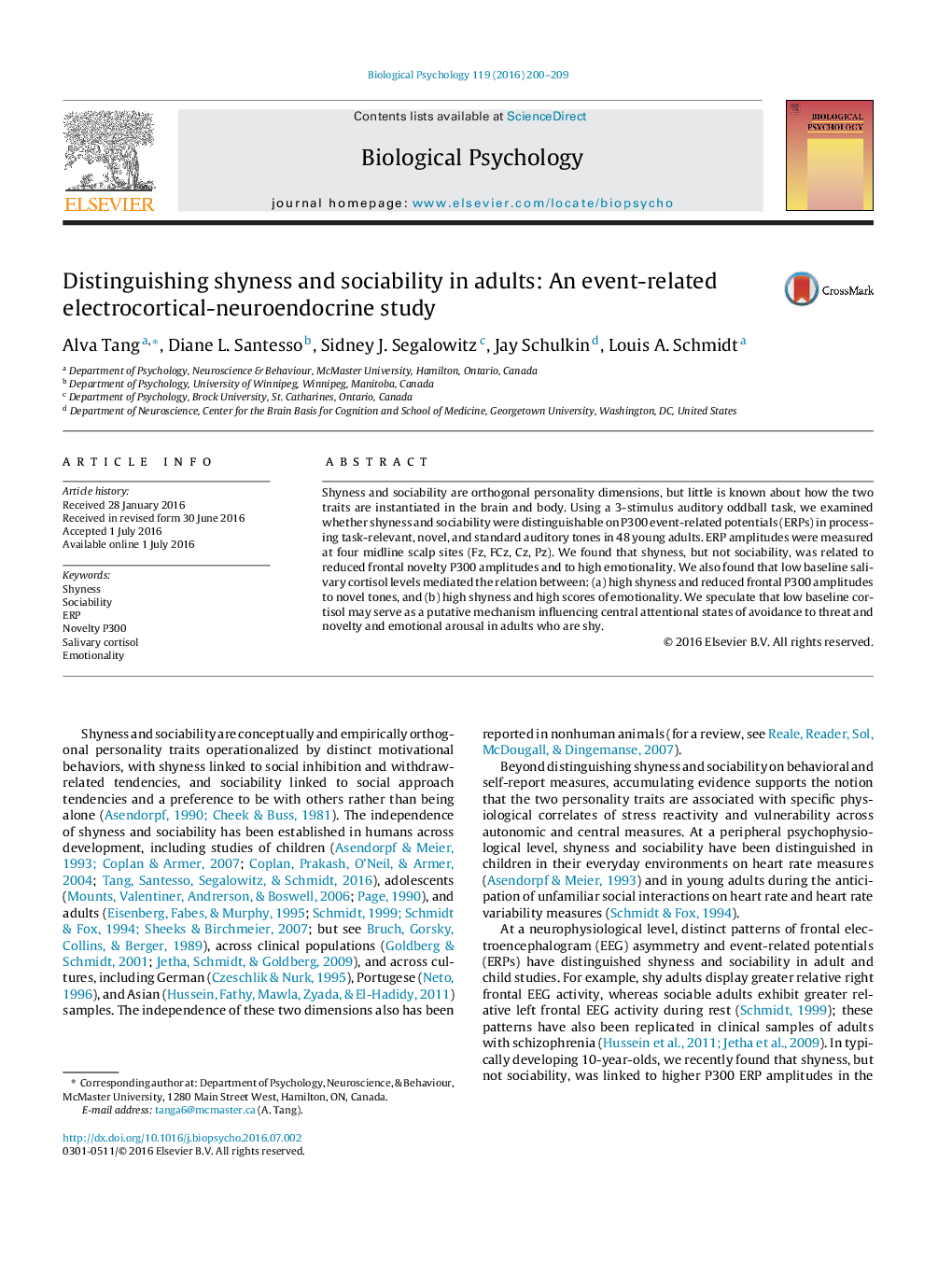| Article ID | Journal | Published Year | Pages | File Type |
|---|---|---|---|---|
| 920753 | Biological Psychology | 2016 | 10 Pages |
•Shyness and sociability are separable on neurocognitive attentional indices to novelty.•Shyness is related to reduced frontal P3 amplitudes to novelty.•Changes in the neuroendocrine system of shy adults may be linked to central attentional states.•Low basal cortisol mediates the link between shyness and low novelty P3 amplitudes.•Low basal cortisol mediates the link between shyness and emotional arousal.
Shyness and sociability are orthogonal personality dimensions, but little is known about how the two traits are instantiated in the brain and body. Using a 3-stimulus auditory oddball task, we examined whether shyness and sociability were distinguishable on P300 event-related potentials (ERPs) in processing task-relevant, novel, and standard auditory tones in 48 young adults. ERP amplitudes were measured at four midline scalp sites (Fz, FCz, Cz, Pz). We found that shyness, but not sociability, was related to reduced frontal novelty P300 amplitudes and to high emotionality. We also found that low baseline salivary cortisol levels mediated the relation between: (a) high shyness and reduced frontal P300 amplitudes to novel tones, and (b) high shyness and high scores of emotionality. We speculate that low baseline cortisol may serve as a putative mechanism influencing central attentional states of avoidance to threat and novelty and emotional arousal in adults who are shy.
